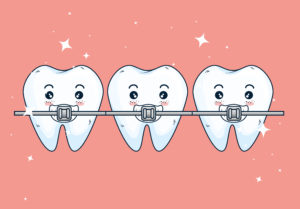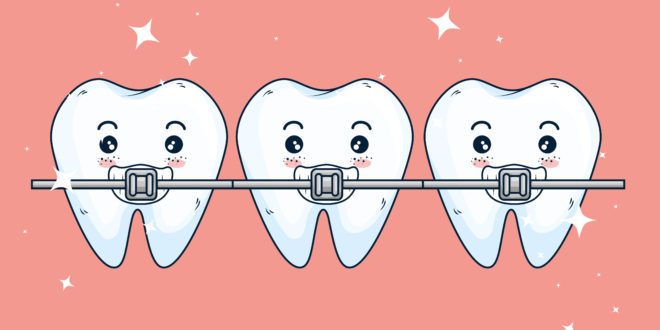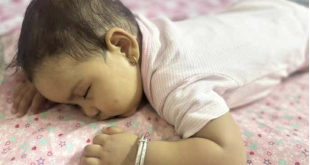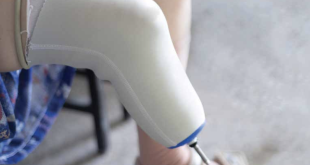 A global phenomenon, the effects of bullying can be both short- and long-term, resulting in both physiological and psychological symptoms, and it is likely that dental care professionals will encounter children who are subjected to bullying. Clinicians and parents should be aware that children with a malocclusion could be subjected to persistent peer victimization, resulting in a negative impact on both their self-esteem and oral health-related quality of life. It is generally assumed that an individual with poor dentofacial aesthetics will have low self-esteem and elicit an unfavorable response from society. Severe facial disfigurement evokes feelings of sympathy and compassion, but milder disfigurements result in ridicule and teasing, creating greater psychological distress in these individuals.
A global phenomenon, the effects of bullying can be both short- and long-term, resulting in both physiological and psychological symptoms, and it is likely that dental care professionals will encounter children who are subjected to bullying. Clinicians and parents should be aware that children with a malocclusion could be subjected to persistent peer victimization, resulting in a negative impact on both their self-esteem and oral health-related quality of life. It is generally assumed that an individual with poor dentofacial aesthetics will have low self-esteem and elicit an unfavorable response from society. Severe facial disfigurement evokes feelings of sympathy and compassion, but milder disfigurements result in ridicule and teasing, creating greater psychological distress in these individuals.
Investigations have shown that grossly disfigured individuals feel that they can almost always count on a negative response wherever they go. It may be surprise, pity, curiosity or repulsion, but seldom, if ever, is it one of immediate approval. Since he/she expects a negative response, he is usually prepared and has developed overt or covert techniques of coping with situations. On the other hand, people with dentofacial deformity, as with buck teeth (“Bugs Bunny syndrome”), for instance, or a receding chin, are less apt to be viewed with compassion than as a target for teasing, nicknames, or caricature, and in certain situations, laughed at or evoked antipathetic feelings. In general, the responses are erratic and unpredictable, and individuals with such deformities appear to be held in a hair-trigger and precarious position. They are never quite certain what will happen. They alternate between feelings of relief and tension, and adjustment to their situation is made difficult. Predictability and consistency of response, then, may be one of the most important factors which permit the grossly deformed to adjust, whereas unpredictability and inconsistency of response seem to reinforce feelings of anxiety.
Even in the absence of stereotyping, there are two other handicapping aspects associated with dentofacial deformity. In the first place, the area in and around the mouth is both emotionally charged and strongly connected with one’s self-image. As an instrument of speech and eating, as well as a mirror of emotions, any abnormality in this area, therefore, is not only highly visible and obtrusive, but as research has shown, tends to evoke a type of aversion which is both esthetic and sexual. A second handicapping factor has to do with the degree to which such defects interfere with the flow of social interaction. Because in normal interaction the eyes attend the face, any irregularity can be distracting and produce uneasiness for the afflicted and the non-afflicted alike.
A UK-based study show that nearly 13% of adolescents aged between 10-14 years examined for orthodontic treatment had been bullied; being bullied is significantly associated with ‘sticking out teeth’, and adolescents who are being bullied due to the presence of a malocclusion reported a negative impact on both self-esteem and oral health-related quality of life. Victimization and bullying can lead to feelings of depression, loneliness, anxiety, and low self-esteem. Boys tend to be more exposed to direct physical bullying than girls, but both sexes are likely to face indirect bullying, such as social isolation
This perceived feeling of being unattractive and different to other people is made worse by the expression of supposed societal norms, through peer group pressure and images in the media. The awkwardness that young people feel about the appearance of their teeth leads to various coping strategies in social situations, including not showing their teeth when they smile, avoiding having their photograph taken, and embarrassment when their photographs are shared through social media.
So, is orthodontic treatment the answer?
Historically, orthodontic appliances are reported to have attracted comments, such as ‘’metallic smile’, or portrayed them as only for nerds, resulting in potential worsening of the teasing. Braces once carried a stigma among teens. However, kids are currently enthralled by models such as Charlie James, a 17-year-old whose braces haven’t stopped him from walking runways for the likes of Karl Lagerfeld, and Kitty Hayes, also 17, whose face fashion bigwig Carine Roitfeld put on a magazine cover.
It is clear that a complex relationship exists between the presence of a malocclusion, bullying, self-esteem, and oral health related quality of life. The benefits of orthodontics for an improvement in body image have been documented.Dissatisfaction and teasing are generally experienced by subjects with extreme or distinct anomalies, all of which are easier to treat in the growing patient. It has also been shown that students with malocclusion who had not received orthodontic treatment have a lower achievement motivation than students who have received treatment. A child’s psychological profile may influence treatment demand, as those with high self-esteem initially appear more likely to seek improvement of their teeth.
The benefits of orthodontic treatment in children are difficult to quantify in psychological terms, but these benefits become apparent in adulthood, as awareness of malocclusion increases with age. For dental care practitioners, clear guidance is lacking; however, any intervention should be focused primarily on the school environment and instigation of anti-bullying policies by involving other specialties. But, it is important that each case is treated individually, and on its own merits, as the psychological impact of bullying, whatever the cause, can be devastating for a child and have long-lasting effects. Research is now focused on ways of measuring the physical, functional, emotional, and social impacts of conditions upon a person’s daily life through the various concepts of quality of life, health, and oral health-related quality of life.
References:
Social and Psychological Implications of Dentofacial Disfigurement, Frances C. Macgregor,
https://bit.ly/2PCUzah
What Are Some Psychosocial Implications Of Congenital Craniofacial Anomalies? https://bit.ly/36m7owe
 Medicosnext
Medicosnext




